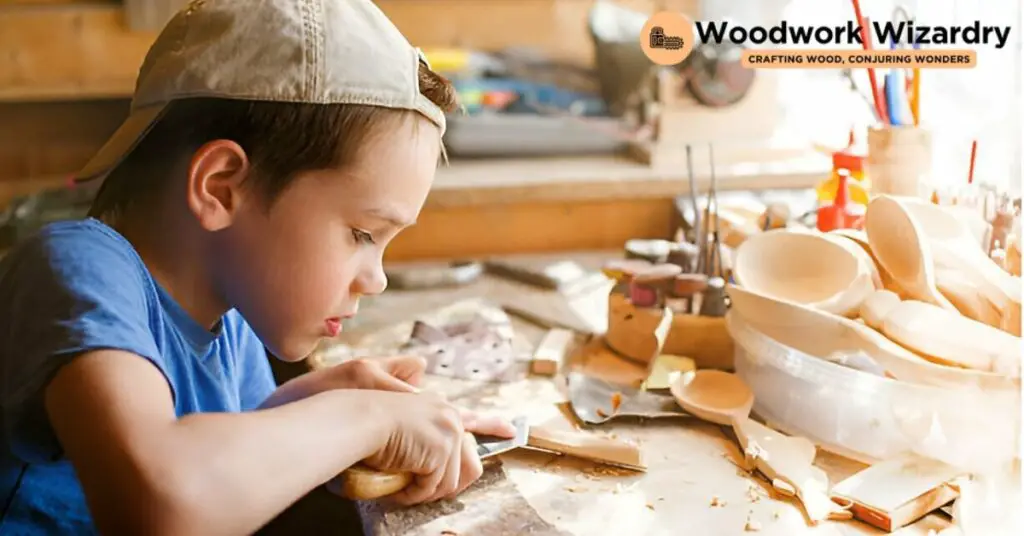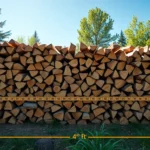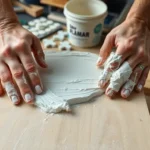Venturing into the world of woodworking can be both exciting and a bit overwhelming. With so many types of wood out there, it’s hard to know where to start. That’s why we’re diving into the best woods for beginners, guiding you through the forest of options to the ones that won’t just make your projects easier but will also help you hone your skills.
We understand the allure of crafting something with your own hands, the satisfaction of turning a raw piece of wood into a work of art. Whether you’re aiming to create a simple shelf or a timeless piece of furniture, starting with the right wood can make all the difference. Let’s explore the woods that offer the perfect blend of workability, availability, and beauty for those just starting their woodworking journey.
Softwoods for Beginners
Navigating the world of woodworking can be quite the adventure, especially when you’re just starting out. Let’s dive into some softwoods that are ideal for beginners, offering qualities like workability, availability, and beauty that make them must-tries for your initial projects.
Pine: The Affordable Choice
Pine really tops our list as a beginner-friendly option. Not only is it incredibly affordable, but it’s also widely available. You’ll find that pine is soft, making it easy to cut and shape. Plus, its light color offers a beautiful canvas for stains and finishes. Whether you’re crafting a simple shelf or a charming coffee table, pine’s forgiving nature allows for a bit of trial and error without breaking the bank.
Cedar: Aromatic and Insect-Resistant
Another fantastic choice for beginners is cedar. Known for its aromatic scent, cedar also brings natural insect-resistant properties to the table, making it perfect for outdoor projects like garden planters or birdhouses. It’s a bit pricier than pine, but its durability and resistance to rot justify the cost. Cedar’s soft texture makes it a joy to work with, and its rich coloration adds an instant warmth and character to any project.
Spruce: Lightweight and Easy to Work
Spruce rounds out our list with its lightweight nature and ease of workability. It’s an excellent choice for larger projects, such as bookcases or wardrobes, where heavier woods could make construction cumbersome. Spruce has a fine, even texture and a pale color that takes well to stains and finishes, offering flexibility in design aesthetics. While it’s soft like pine and cedar, spruce provides a slightly more robust option that’s still gentle enough for beginners to handle comfortably.
By starting with these softwoods, you’ll not only ease into woodworking more smoothly but also build your skills and confidence. Each wood provides unique characteristics, yet they all share the essential qualities beginners need: workability, affordability, and beauty.
Hardwoods for Beginners
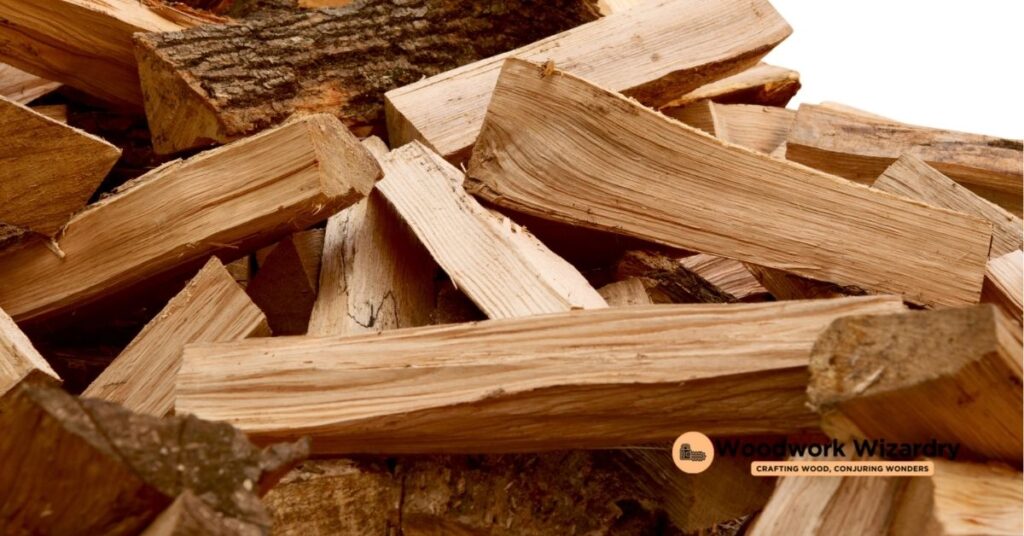
Transitioning from the forgiving nature of softwoods, let’s explore the best hardwoods for beginners. These selections strike a balance between durability and ease of use, perfect for those ready to tackle new challenges.
Poplar: A Versatile Option
Poplar stands as a top choice for beginners venturing into hardwoods. Its soft texture makes cutting and shaping a breeze, offering a gentle introduction to harder woods. Plus, its affordability and wide availability make poplar an excellent choice for various projects, from furniture to decorative items. You’ll find poplar’s light color and minimal grain appealing, especially when considering paint or stain finishes.
Basswood: Ideal for Carving
For those interested in carving, basswood is a dream come true. Its remarkably soft, even texture allows for smooth carving, making it a favorite among beginners and experienced woodworkers alike. Basswood’s light color and grain provide a clean canvas for projects that require fine detail, such as figurines, decorative pieces, or intricate carvings. And don’t worry about breaking the bank—basswood is as affordable as it is user-friendly.
Cherry: Beautiful and Easy to Shape
Cherry offers an unbeatable combination of workability and beauty, making it an excellent hardwood for beginners eager to create stunning pieces. Its rich, warm color deepens with age, adding character and elegance to any project. Cherry’s grain is fine and straight, facilitating easy cutting and shaping. While slightly pricier than other beginner-friendly woods, its aesthetic appeal and ease of use justify the investment, particularly for projects that call for a visually impressive finish.
Factors to Consider When Choosing Wood
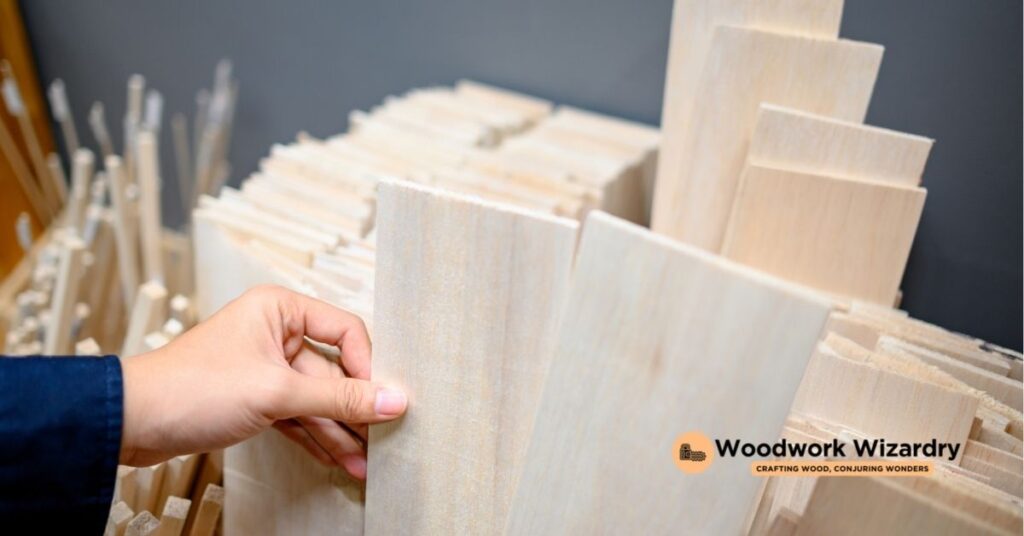
After diving into the varieties of wood that make great starting materials for beginners, let’s explore the crucial factors you should consider when selecting the right wood for your projects.
Cost and Availability
First on our list is looking at the cost and how readily available the wood is. Woods like pine, cedar, and spruce not only offer a gentle learning curve but are also quite affordable and easy to find at most local hardware stores or lumber yards. This makes them perfect for experimenting without breaking the bank. Poplar stands out among hardwoods for similar reasons – it’s relatively inexpensive and widely available, making it a stress-free option for beginners eager to try their hand at working with hardwood.
Workability and Hardness
The workability of a wood and its hardness are key to ensuring a satisfying crafting process. Softwoods, given their less dense nature, tend to be easier to cut, carve, and shape. This makes them ideal for beginners who are still mastering their techniques. Hardwoods like basswood take it a step further; basswood is particularly known for its carving ease, making it perfect for projects that require intricate details. It’s essential to balance the desire for durable projects with the ease of crafting, especially when first starting out.
Grain Patterns and Aesthetics
Lastly, consider the grain patterns and the overall aesthetics of the wood. Each type of wood has unique grain patterns that can significantly affect the final look of your project. Woods like cedar and cherry are celebrated for their beautiful grain and color, adding an element of sophistication to your work. Understanding how to select wood based on grain can elevate your projects from simple to extraordinary. It’s not just about the functionality; the visual appeal of your finished pieces plays a huge role in the satisfaction you’ll derive from woodworking.
Tips for Working with Wood as a Beginner

Diving into woodworking can be incredibly rewarding, and knowing a few insider tips can make the journey smoother. Let’s explore the best practices that can elevate your woodworking experience from the start.
Selecting the Right Tools
Start with the basics. Investing in a quality set of tools, such as chisels, saws, and a reliable drill, is essential for beginners. These tools form the foundation of your toolkit and will be used in almost every project. Remember, it’s not about having the most tools, but having the right tools that matter. Opt for tools that feel comfortable in your hands and suit the types of projects you’re eager to tackle. For example, a good quality hand saw can make precise cuts in softwoods like pine, cedar, and spruce, which are great starting materials for beginners.
Practicing Your Technique
Practice makes perfect, especially in woodworking. Begin with simple projects that hone basic skills, such as cutting, shaping, and joining. Softwoods like poplar and basswood are forgiving for beginners, allowing you to refine your technique without too much frustration. Try different techniques, like carving or inlay, to discover what excites you the most. The more you practice, the better you’ll get at handling various wood types and understanding their properties, from the soft, workable nature of spruce to the more challenging, yet rewarding, hardwoods like cherry.
Finishing Your Projects
Finishing can dramatically enhance the look and feel of your projects, turning a good piece into a great one. Start by experimenting with different finishes such as oils, stains, and waxes. Each wood type, from the softer cedar to the denser cherry, reacts differently to finishes, affecting the final appearance and feel. Applying finishes also protects the wood, extending the life of your projects. Practice applying finishes on scrap pieces to get a feel for the process and to understand how different finishes amplify the natural beauty of the wood. Remember, the final finish can make all the difference, so take your time and enjoy the process of bringing out the best in your woodwork.
Resources for Beginner Woodworkers
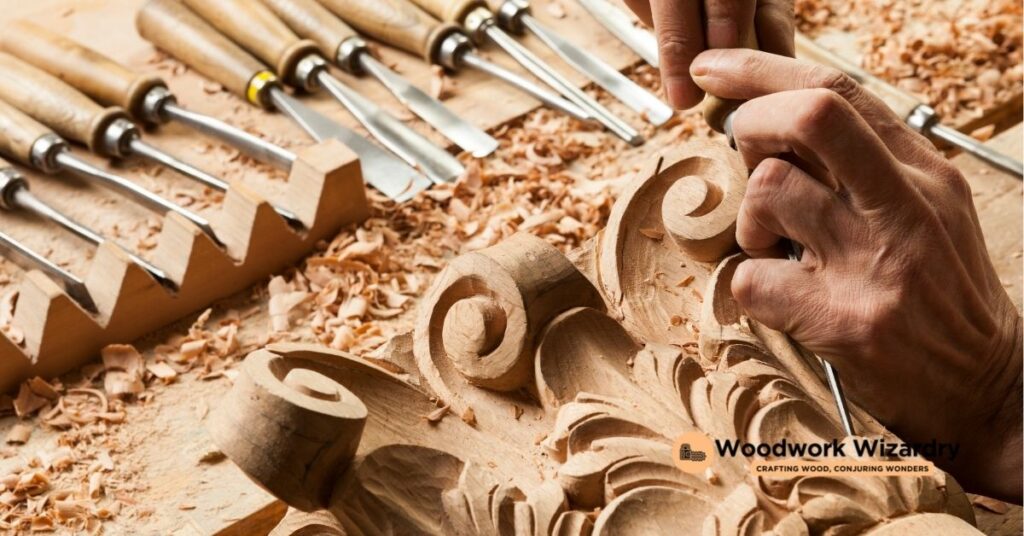
Having the right resources can dramatically enhance your woodworking journey. From helpful literature to engaging communities and hands-on learning opportunities, we’ve got you covered.
Books and Magazines
Diving into the world of woodworking books and magazines can offer a wealth of knowledge. Titles like “The Complete Book of Woodworking: Step-by-Step Guide” serve as an excellent starting point, offering detailed instructions on various projects and techniques. Magazines such as “Fine Woodworking” and “Popular Woodworking” are packed with tips, tricks, and project ideas, catering to both beginners and experienced woodworkers. They not only provide inspiration but also keep you updated on the latest trends and tools in the woodworking world.
Online Forums and Communities
Online forums and communities are treasure troves of information, advice, and support. Websites like WoodworkingTalk.com and LumberJocks.com boast active, friendly communities eager to share their knowledge. Reddit also has several woodworking-related subreddits, such as r/woodworking, where beginners can ask questions, share their projects, and receive feedback. These platforms offer an invaluable opportunity to learn from others’ experiences, troubleshoot problems, and connect with fellow woodworking enthusiasts.
Local Workshops and Classes
Nothing beats hands-on learning, especially when it comes to woodworking. Local workshops and classes provide beginner woodworkers with a chance to learn basic skills, understand safety measures, and get familiar with tools under the guidance of experienced professionals. Community colleges, adult education programs, and local woodworking stores often offer classes tailored to beginners. Additionally, joining a local woodworking club or guild can provide opportunities for workshops, mentorship, and connecting with a supportive community of woodworkers.
By exploring these resources, you’ll not only build your skills but also join a vibrant and supportive community of fellow woodworking enthusiasts. Whether you prefer learning through reading, online engagement, or practical experience, there’s something out there for every beginner woodworker.
Conclusion
We’ve walked through the basics of selecting the right wood for those just starting their woodworking journey. From the soft, forgiving nature of pine, cedar, and spruce to the more challenging yet rewarding hardwoods like poplar, basswood, and cherry, there’s a wood type out there for every beginner. But it’s not just about choosing wood. It’s also about diving into the rich resources available to you. Whether it’s flipping through the pages of a detailed woodworking magazine, engaging in lively discussions online, or getting hands-on experience in local workshops, there’s a whole world waiting to help you hone your craft. So grab a piece of wood and let’s start creating something amazing together. Remember, every master was once a beginner, and with the right tools and resources, we’re all on our way to becoming skilled woodworkers.
Related Posts:
- Top Beginner-Friendly Woods: Find Your Perfect Match for Woodworking
- Top 10 Best Woods for Turning: Softwoods to Exotics
- Ultimate Guide: How to Carve a Wood Spirit – Techniques & Care
- Prevent Splitting: How to Keep Green Wood Intact
- Ultimate Guide: How to Oil a Mini Chainsaw for Peak Performance
- Easy Guide: How to Untangle a Chainsaw Chain Safely & Quickly
- Is Woodworking Hard? Debunking Myths & Mastering the Craft
- What Is a Mandrel? Exploring Its Types and Industrial Applications
- Why Is Teak Wood So Expensive? Unveiling the Reasons

